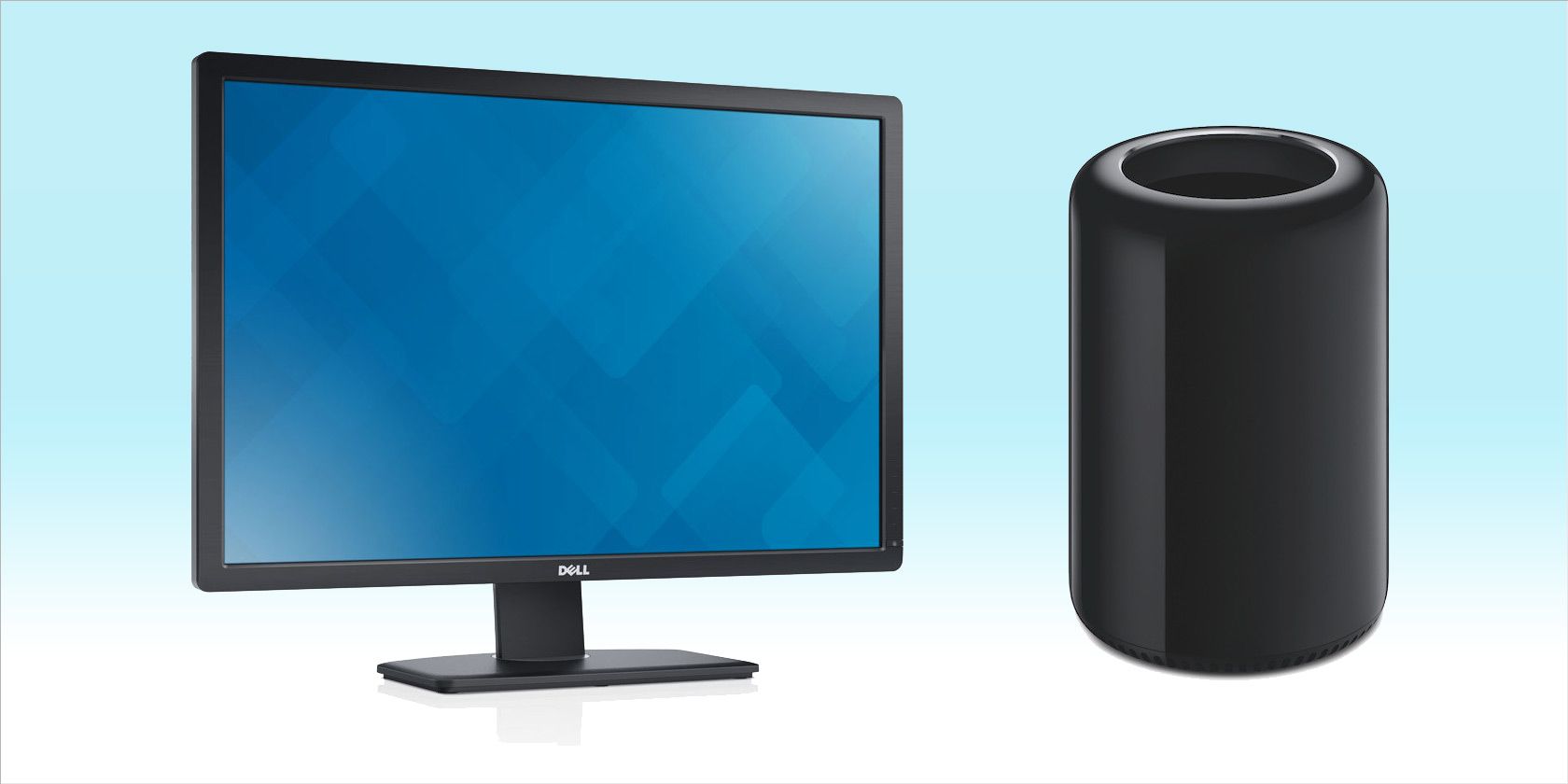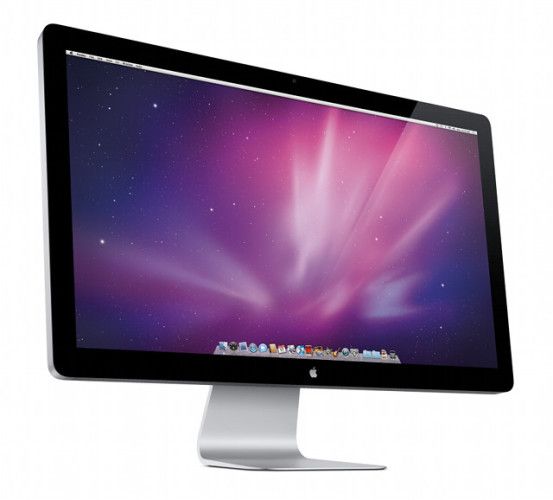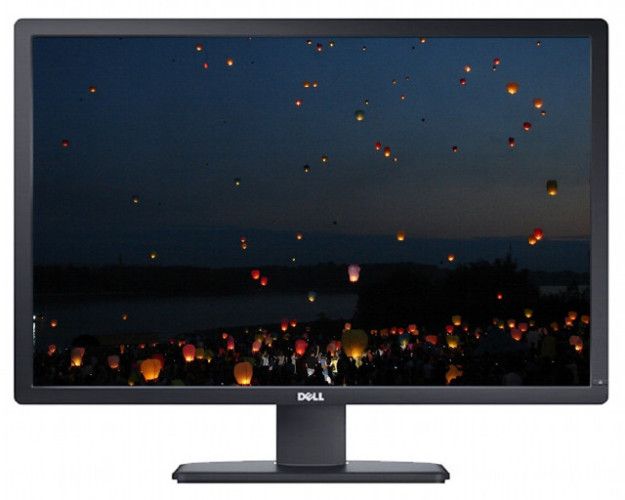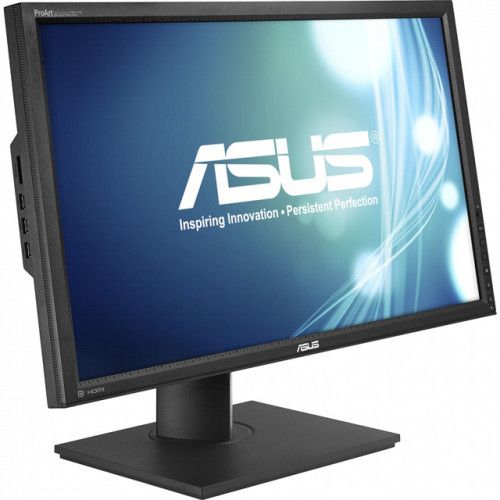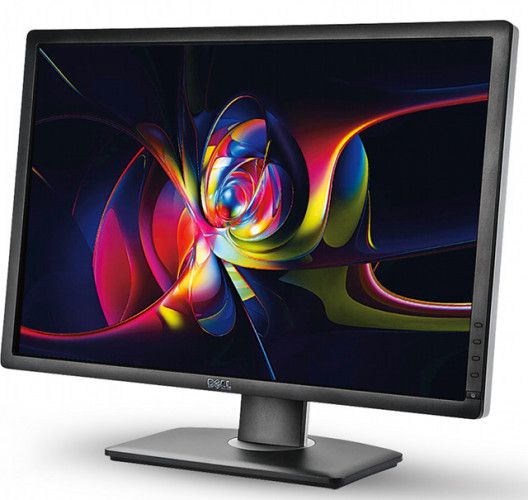Apple's new Mac Pro is a serious desktop for people who have serious computing needs. Though equally suited for work or home, its powerful hardware is designed to fit the needs of people who edit movies, create digital art and use big, demanding programs.
This means that the Pro can't be paired with any mundane monitor. No! Only the best will do. The system's FirePro graphics cards are designed to power big, pixel-dense displays, and several of them can be used at once to create the ultimate office command center.
Which display should you buy to do the new Mac Pro justice? Here are a few options.
Apple Thunderbolt Cinema Display ($999)
This one is obvious, right? Apple makes a monitor. You should buy it, because it's pretty good.
Or not. The current Apple Cinema Display, which offers a resolution of 2560x1440 and a beautiful image quality out of the box, seems like the default because of its quality and because of the Apple logo on its bezel. The Cinema Display also provides a built-in web cam and a number of additional ports that become available after connecting it via Thunderbolt.
There are few problems, though. The first is a general lack of adjustability. There's no height adjustment, no VESA mount and limited display controls. To make matters worse, at $999 it's a bit overpriced for what it is, proving that Apple Tax is not yet entirely a thing of the past.
If you're not a serious professional, but instead an average Joe or Jane who occasionally dips into some more demanding work, the Cinema Display is nice. Otherwise, keep reading.
Dell UltraSharp U3014 ($1,499)
For years Dell has been the 500-pound gorilla in the high-end monitor market, ripping the arms off competitors and stuffing them in various unpleasant places. The company's UltraSharp line has consistently provided amazing displays with a buffet of features and reasonable (though still expensive) price points.
The Dell UltraSharp U3014 is the current 30-inch flagship, and it's a doozy. Want 2560x1600 resolution? You got it! Want a gamut that spans 100% of sRGB and 99% of Adobe RGB? Not a problem. Want out-of-the-box color accuracy below a Delta E of 2? You will find it here. The U3014 is a whirlwind of specs and numbers, all of which add up to one outstanding piece of kit.
Disadvantages? Well, it's not calibrated for low response times, so some gamers might sense some input lag, maybe. There's also no support for ThunderBolt, so you'll be using a regular DisplayPort connection. The real problem, though, is the price: a full MSRP of $1,499 (currently listed on eBay for $999.99). The U3014 is arguably worth every penny, but that's still a lot to pay for a monitor.
ASUS PA279Q [Broken URL Removed] ($799)
Though Dell remains the default selection for most consumers serious about image quality, ASUS has recently appeared to give the reigning champion a fight. The company now offers a line of professional-grade monitors that can go toe-to-toe with the Dells and are often sold for less.
Perhaps the best value is the 27-inch PA279Q, which is usually $799. That's $200 less than the MSRP of Dell's best monitor of similar size, yet ASUS still offers 2560x1440 resolution, excellent color accuracy and a host of ergonomic adjustments. Even experienced eyes will have a hard time telling the difference between this monitor and Dell's equally excellent, but more expensive, UltraSharp U2713HM.
The only problem is flicker. ASUS uses a technique called pulse width modulation, which turns the backlight on and off at rates normally invisible to the human eye, to create different levels of brightness. While most people can't see each pulse, sensitive users may notice the trick, and PWM can cause eye strain for these individuals. Dell's more expensive U2713HM does not use this technique, and so is a better choice for people who commonly experience monitor-related eye strain.
Dell UltraSharp 2412M ($369)
Everyone agrees that big monitors are awesome, but not everyone owns them. They're expensive, of course, and they also take up a lot of desk space. Some people prefer to use several smaller monitors, while others simply want space free for other reasons.
If all of this very practical talk hasn't put you to sleep you may want to pick up Dell's trusty UltraSharp 2412M. This 24" IPS 1920x1200 monitor isn't designed to offer the same incredible gamut and color accuracy as some other models, but it's still good enough to satisfy most users, and the monitor's MSRP of $369 is reasonable. And you can often buy it for even less than that, as Dell routinely knocks $50 off the price.
Though this is an entry-level IPS monitor, it still provides a host of ergonomic features (like tilt, swivel and height adjustment) and can act as a USB hub. If you don't need perfect color accuracy, or you've already spent all your money on the Mac Pro, this Dell is the way to go.
Where's The 4K At?
You've now read four solid recommendations that cover a spectrum of size and price, and you may have noticed none of them are 4K displays. Which may lead you to ask – what gives? Wouldn't a 4K display sense? After all, the kind of person who can splurge for a Mac Pro can probably afford 4K as well.
There's just one tiny problem; OS X doesn't seem to like 4K. Reviewers testing ultra HD monitors with the new Mac Pro have noted significant scaling issues with icons and fonts. You'd think Apple would have the problem solved given the company's work on the MacBook Pro and iPad with Retina, but apparently the magic hasn't been cast on 4K support just yet. That may change in the future but, for now, 2560x1600 is the highest resolution you should consider.
What do you think of our monitor selection? Do you agree, or would you rather buy a NEC, HP or one of those off-brand Korean monitors? Speak your mind in the comments!

